Pamplona, Spain – Carnival, 1972
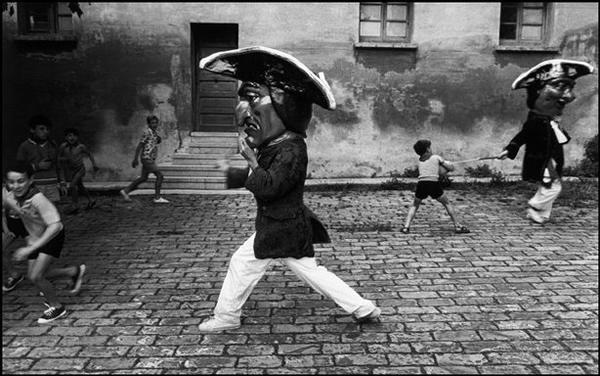
Josef Koudelka, a Czech man born in 1938, was originally an aeronautical engineer with a passion for photography. He travelled across Europe photographing nomadic communities, and when the Soviet Union invaded Prague, he took photos and exposed wartime atrocities in the region. As a result of this photography, Koudelka became a political refugee, fleeing to England and later settling in France. He never stopped travelling and exploring Europe’s stranger sights – including this unusual Spanish carnival in 1972.
An early hipster with a cinched waist poses in front of the Eiffel Tower
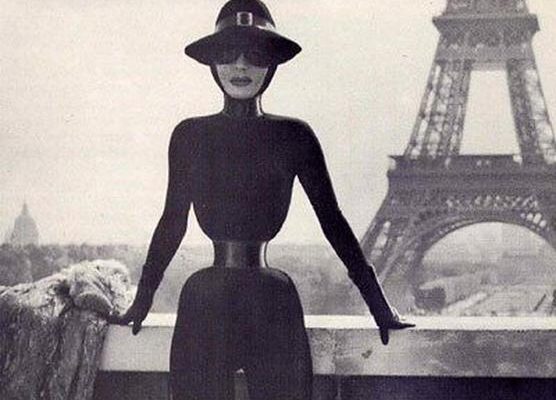
This image shows Cora Korsett, a German BDSM and body modification model. At six feet tall, with an extremely striking waistline, she was an imposing figure. Photos like this often appeared in fetish magazines of the 60s and 70s. “The distance between my hip bones and the lower ribs is relatively large, which provides more room for the narrowing of the intervening soft portion of the waist, and secondly my ribs can be compressed much closer than in a person with a broad chest,” Korsett noted in one interview.
An early drag queen strikes a pose
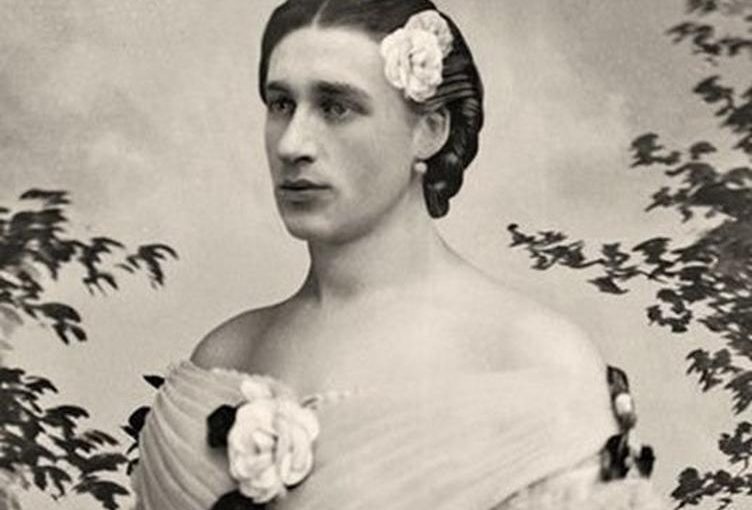
Julian Eltinge is the subject of this beautiful and unusual portrait. Born in 1881, he took his first crossdressing role at the age of 10. He starred on Broadway and travelled around the US and Europe as a vaudeville performer, often appearing in drag. He even performed for King Edward VII and became one of the best-paid US stage actors of his era. After starring in movies like The Countess Charming and The Isle of Love, Eltinge suffered financially during the Great Depression. He resorted to nightclub performances to make ends meet towards the end of his life – but this photo has immortalised his captivating look.
Untitled, Josef Koudelka 1962-1968
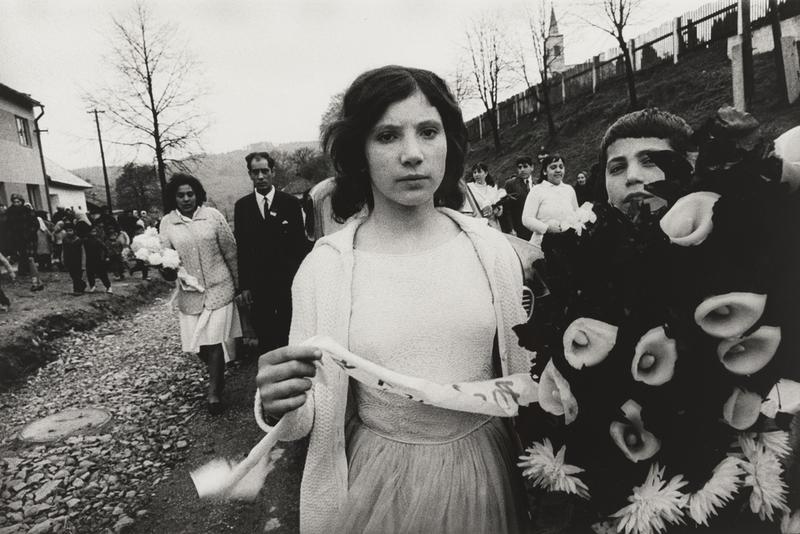
Here is another shot from Josef Koudelka’s adventures with traveller communities in Europe. It shows an unusual procession, adorned with flowers. “Koudelka’s pictures seem to concern themselves with prototypical rituals, and a theater of ancient and unchangeable fables,” noted the curator John Szarkowski. “Their motive is perhaps not psychological but religious,” he added. “Perhaps they describe not the small and cherished differences that distinguish each of us from all others, but the prevailing circumstance that encloses us.”
Carnival in Olomouc, Czechoslovakia, 1968
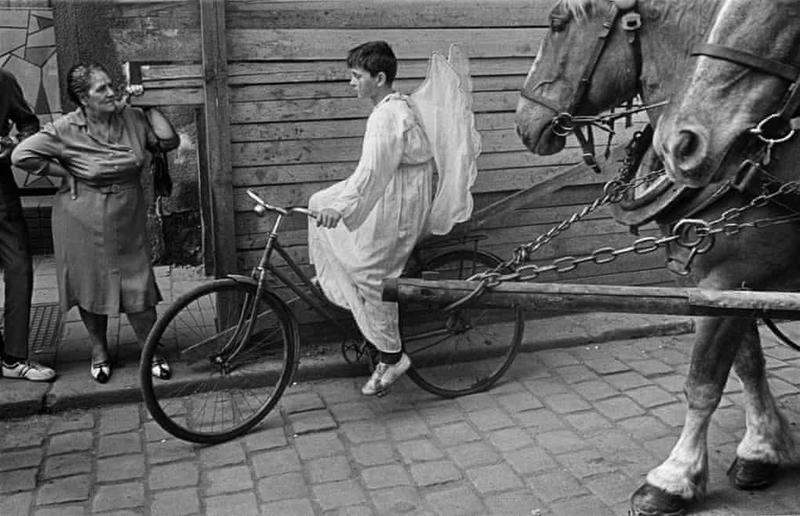
Josef Koudelka spied this morose-looking boy at a Czech carnival, and realised that it would make a spooky composition. The slightly unhinged, dreamlike quality of Koudelka’s photographs may have been influenced by the photographer’s liminal lifestyle at this time. “I knew that I didn’t need much to function – some food and a good night’s sleep. I learned to sleep anywhere and under any circumstances,” he once said. “I had a rule: ‘Don’t worry where you are going to sleep, so far you’ve slept almost every night, you’ll sleep again tonight.'”
Woman riding side-saddle, 19th century
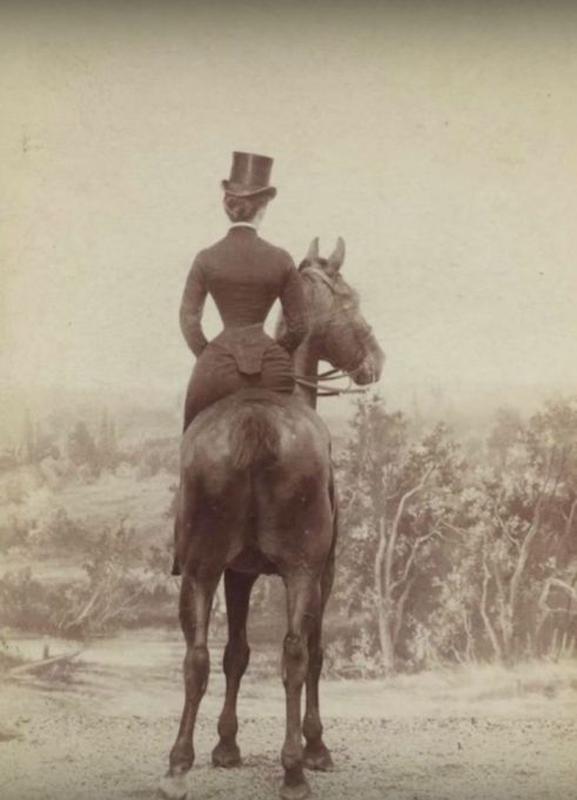
This photo shows a lady riding in a side saddle. Now an extremely rare sight, side saddles have been depicted as far back as antiquity. In Ancient Greek artwork, we can see women travelling in a side saddle – though these early models were for passengers only, while someone else controlled the horse. In medieval Europe, side saddles were perceived as a more modest and practical way to travel for upper-class women in long skirts. Anne of Bohemia and Catherine de’ Medici both popularized new versions of this seating arrangement. Other famous women of history, such as Marie Antoinette and Catherine the Great, preferred to break societal norms and ride astride the horse.
Two cowboys hold hands in sheepskin skirts
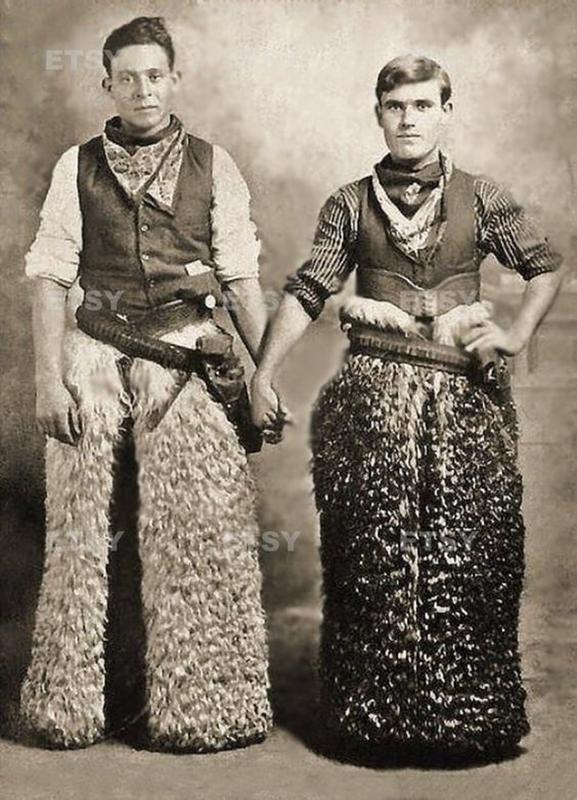
This shot of two cowboys tenderly holding hands may come as a surprise. In reality, many photos of cowboys show same-sex couples or friends who were physically intimate. (This hidden history has been brought back to the public consciousness with movies including 2005’s Brokeback Mountain and 2021’s The Power of the Dog.) Same-sex dances were even held in the Old West, although these were ostensibly due to a lack of women in rural areas as opposed to explicit homosexuality. Half of the men danced the women’s side, with trouser patches to indicate their role.
Scherzo di Follia circa 1860s
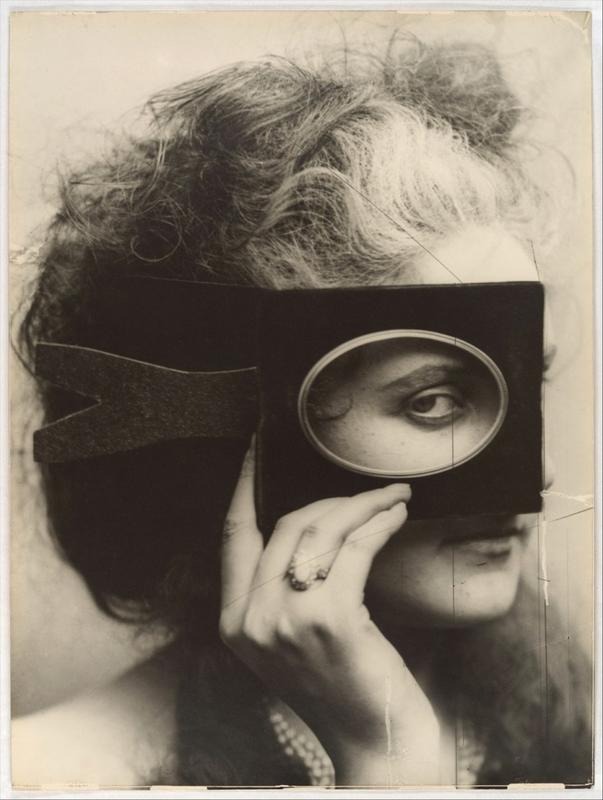
A diplomat and charmer, Countess Virginia Oldoini Verasis di Castiglione was an Italian aristocrat who moved to Paris in 1855 to forge bonds with Emperor Napoleon III. She became his mistress and won considerable power over the French politics of her era. La Castiglione was an early advocate of photography, posing for over 700 pictures by the photographer Pierre-Louis Pierson. This bewitching shot was taken sometime between 1863 and 1866.
Shadow, New York City, 1966
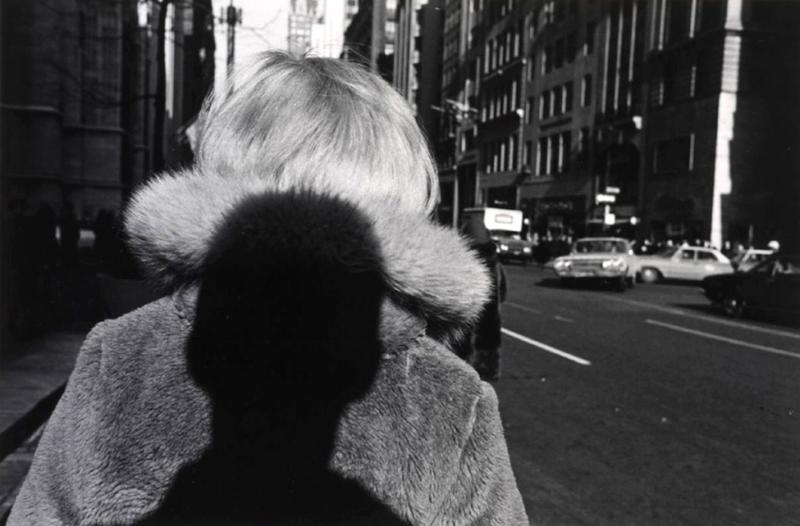
This creepy shot is the work of Lee Friedlander, whose street photography of the 60s and 70s was often unorthodox. “I always wanted to be a photographer,” Friedlander later stated. “I was fascinated with the materials,” he elaborated. “But I never dreamed I would be having this much fun. I imagined something much less elusive, much more mundane.”
Lady And Her Horse On A Snowy Day In 1899
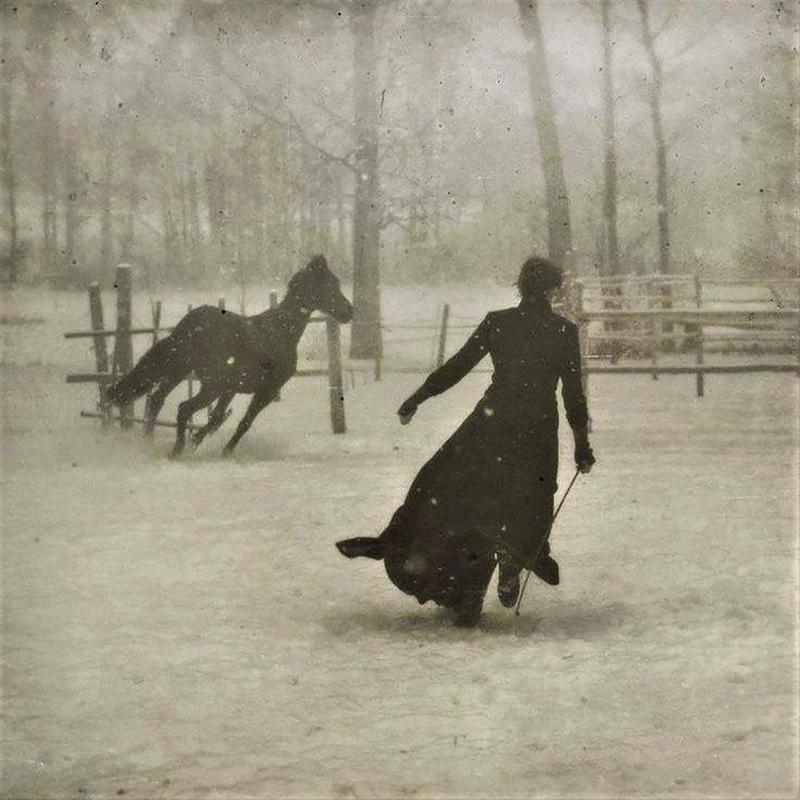
Animals have been popular photographic subjects for as long as humans have, but their sudden movements proved a blurry challenge before the invention of fast film. Felix Thiollier, born in 1842, was a French industrialist who revelled in the latest technology, as his beautiful photography shows. This black-and-white image shows a woman and horse gallivanting in the snow, with great plumes tossed into the air as the flakes keep falling. A dreamy composition, it is otherworldly as well as exhilarating. The woman in this picture is probably Thiollier’s daughter Emma.
Occasion for Diriment, 1962
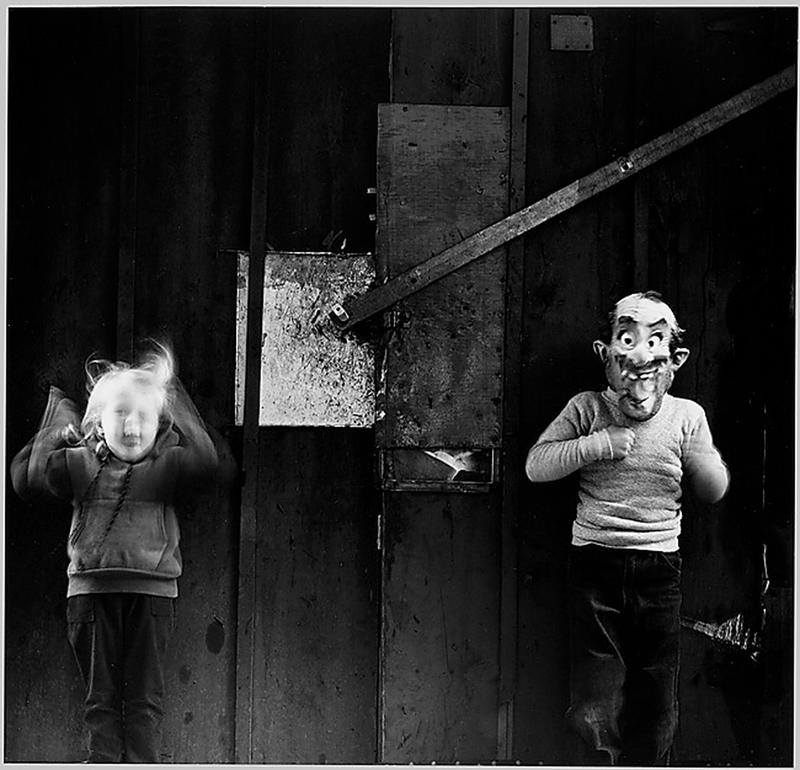
Sometimes photographers deliberately seek out blurry moments, to add a sense of intrigue to their artwork. The eccentric optician-turned-photographer Ralph Eugene Meatyard, from Kentucky, loved to create surreal and puzzling scenes starring his closest friends and family. This disturbing shot shows how Meatyard was inspired by surrealism in the 60s, as the movement’s popularity was drawing to a close. He named this image ‘Occasion for Diriment’ – diriment being a self-created portmanteau of the words ‘dire’ and ‘merriment.’
Jimmy ‘One Eye’ Collins After Arraignment, 1946
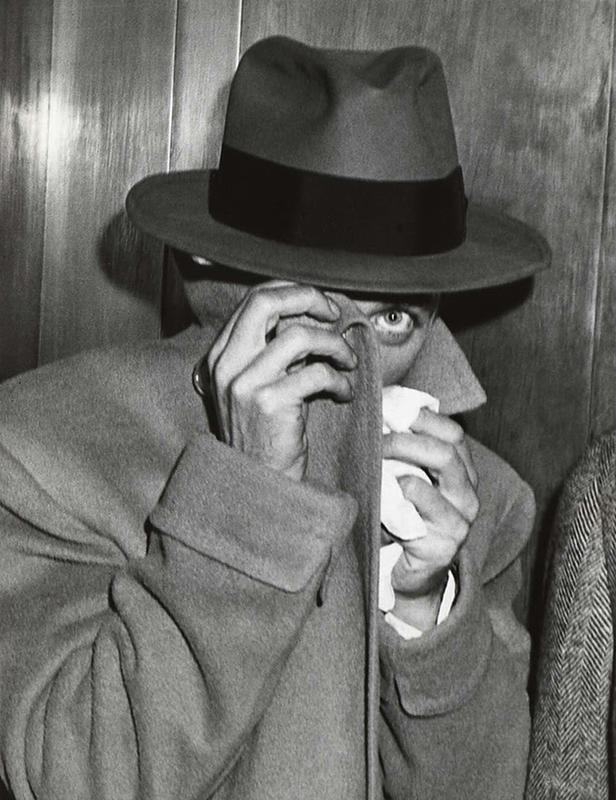
Little is known about this strange photo, supposedly captured in the moment after a 40s crook came face-to-face with justice. Clearly fascinated with half-glimpsed faces, the artist Bill Wasilevich entitled this piece ‘Jimmy ‘One Eye’ Collins After Arraignment’. But we never see if Jimmy’s nickname holds true, as most of his face is obscured by a coat. This unusual work cropped up in New York’s Met Museum in 2014, as part of an exhibition called Now You See It: Photography and Concealment.
Peasant Scene
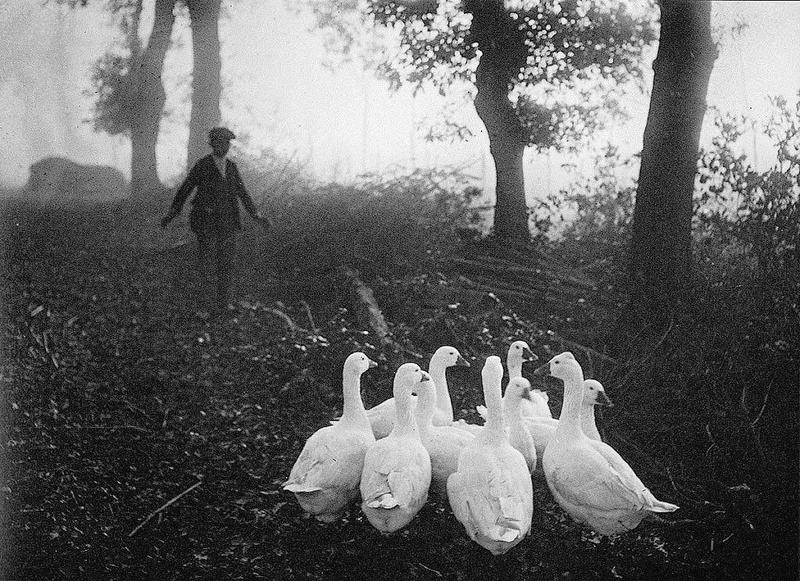
In another work by the French industrialist Félix Thiollier, this intriguing picture shows a flock of domesticated geese. The possible date range of this image is 1895-1905. Commonly entitled ‘Peasant Scene’, the shot also includes a boy, wrapped up in autumnal clothing, who may be herding the animals through the woods. Thiollier was a close friend of the famed Lumière brothers, with whom he swapped photography tips and early autochrome ideas.
At Shottery Brook, Stratford-Upon-Avon, 1890
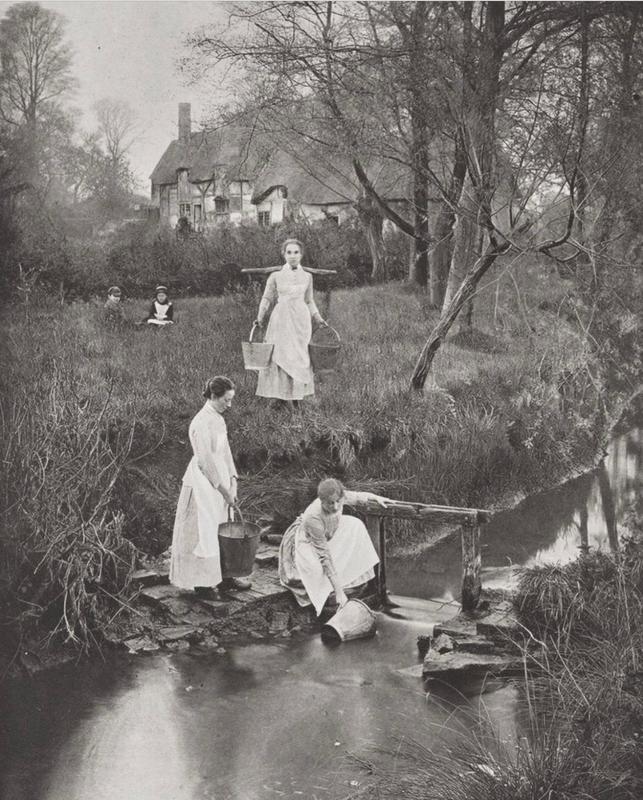
This haunting shot from 1890 shows Shottery Brook in England. Once a small village and now part of the town, it lies next to Stratford-upon-Avon. Shottery was the childhood home of Anne Hathaway, a woman who later became the wife of William Shakespeare and eventually settled in Stratford-upon-Avon with him. Traditional life in an English village was not always so idyllic as it is depicted. During the Victorian era, the working women of Shottery collected water from the brook in what must have been back-breaking labour.
A thoughtful gargoyle looks over the Square Jean-XXIII, Paris
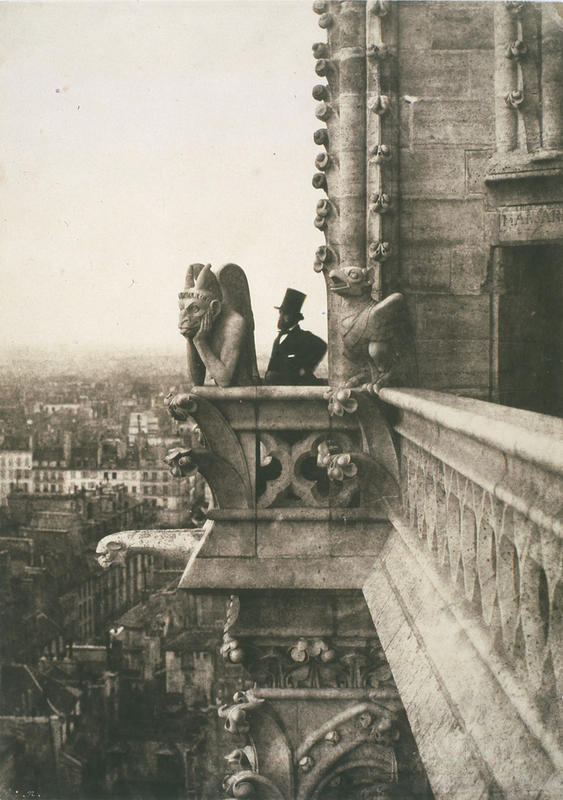
This photo by the French artist Charles Nègre received its title, The Vampire, from a later collector. It shows Nègre’s friend Le Secq posing on a balcony of Notre-Dame Cathedral amid its extraordinary Gothic architecture. Meanwhile, the gargoyle at the heart of this picture gazes down wistfully upon Square Jean-XXII. This site offers magnificent views of the cathedral and today is filled with pink tree blossom.
Figure contemplating the mountains of Menzenc
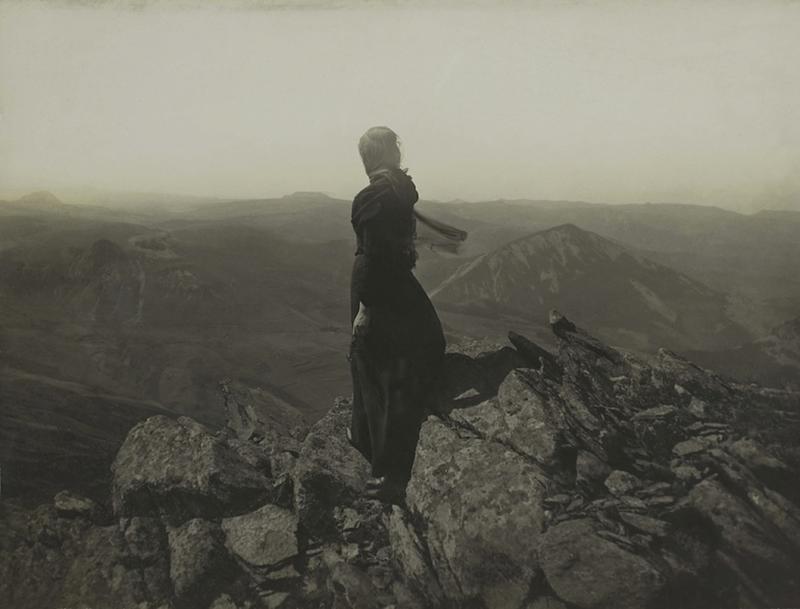
This shot by Thiollier features a female figure, dressed in winter layers and polished shoes, as she overlooks a spectacular craggy landscape. Her view is of the Mont Mézenc, a mountain summit of the Massif Central, France. Massif Central is a highland region covering 15% of mainland France. This was a nostalgic sight for Thiollier, who grew up in the city of Saint Étienne within the area. He would die in his birth city on May 12, 1914, two months before World War One began.
A traveller and his horse, Romania, 1968
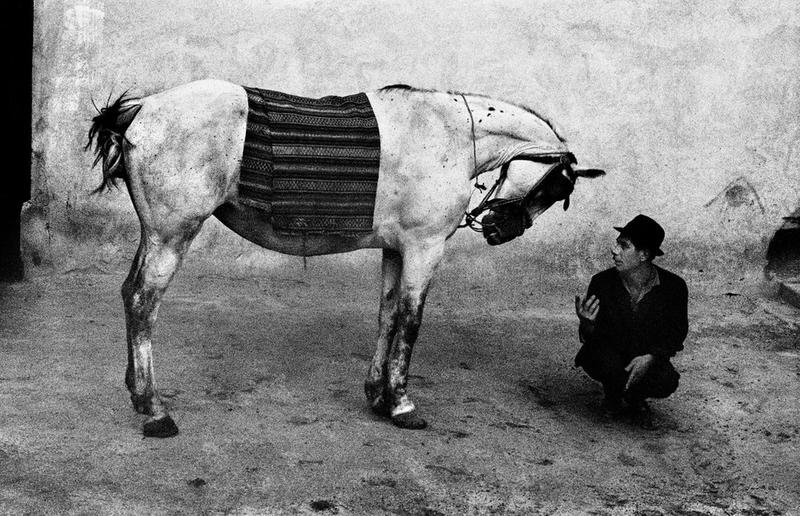
Czech-French photographer Josef Koudelka was fascinated with traveller and nomadic communities, and he loved the independence that came with photographing these subjects. “For fifteen years, I didn’t work for anybody,” he once noted. “I never accepted an assignment, and never photographed for money,” he added. “I took photographs just for myself. I lived on the minimum. I didn’t need much: a good sleeping bag and some clothes – one pair of shoes, two pairs of socks and a pair of trousers for one year. One jacket and two shirts lasted me for three years.”
Charles Sodokoff and Arthur Webber use their top hats to hide their faces, 1942
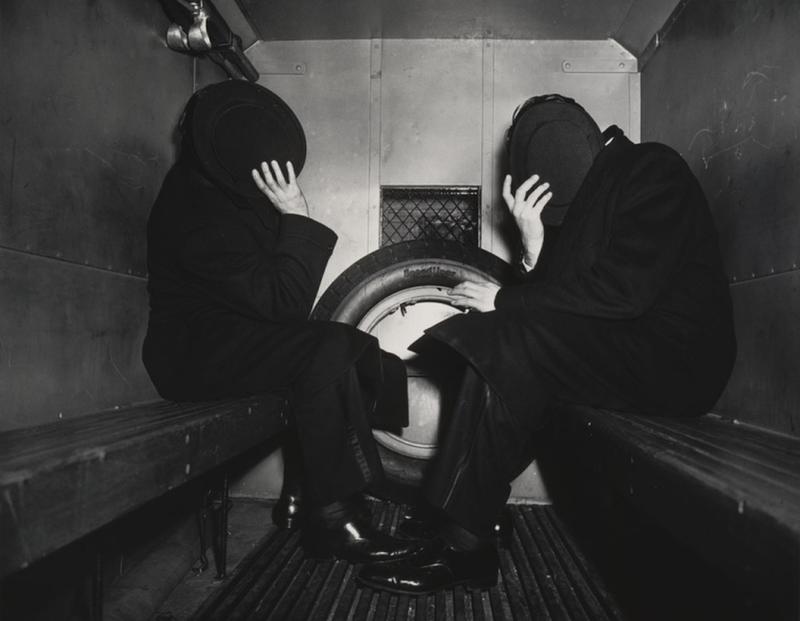
In 1942, Arthur Fellig captured this shot of criminals Charles Sodokoff and Arthur Webber, who hide their faces – in shame or in a desire for anonymity – as they are carted off in a paddy wagon. “People are so wonderful that a photographer has only to wait for that breathless moment to capture what he wants on film,” Fellig once said of his artwork. “…And when that split second of time is gone, it’s dead and can never be brought back.”
Landscape with Figure, circa 1880-1882
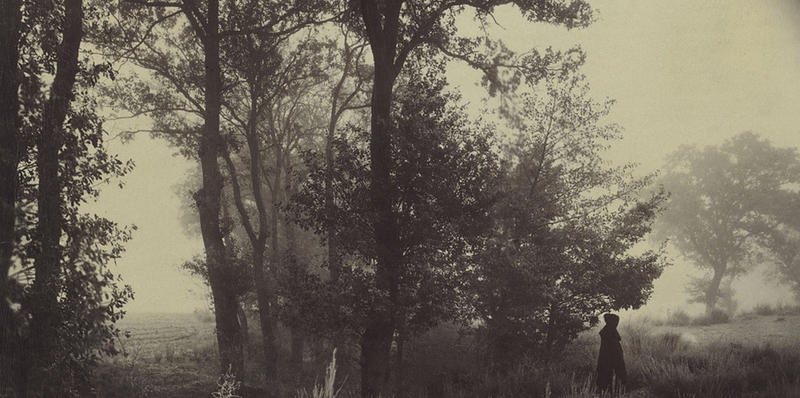
It was at the age of 37 that Félix Thiollier began living off his fortune so that he could pursue his personal passion for photography and regional geography, leaving the world with beautiful shots like this. This photo was taken in Forez, a former province of France that includes a mountain range of the same name. Its historical capital was the city of Montbrison in Loire. This photo has been reproduced online courtesy of France’s famed Musée d’Orsay
The Croagh Patrick pilgrimage, County Mayo, Ireland, 1972
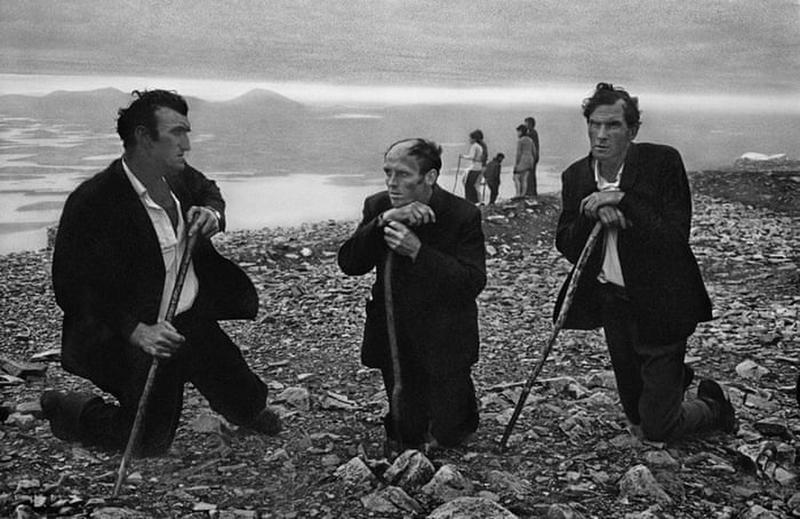
In 1972, Josef Koudelka caught this moment on a foggy day in County Mayo, Ireland. The three men in the foreground are crouching atop Croagh Patrick. They have undertaken a traditional pilgrimage, which to this day is followed by thousands on the last Sunday of July each year. They are walking in the steps of Saint Patrick, who according to legend climbed this mountain and then fasted for 40 days in this unforgiving landscape. The pilgrimage is followed by the local festival of Lughnasadh.
Decor for a fete or fair, Saint-Etienne
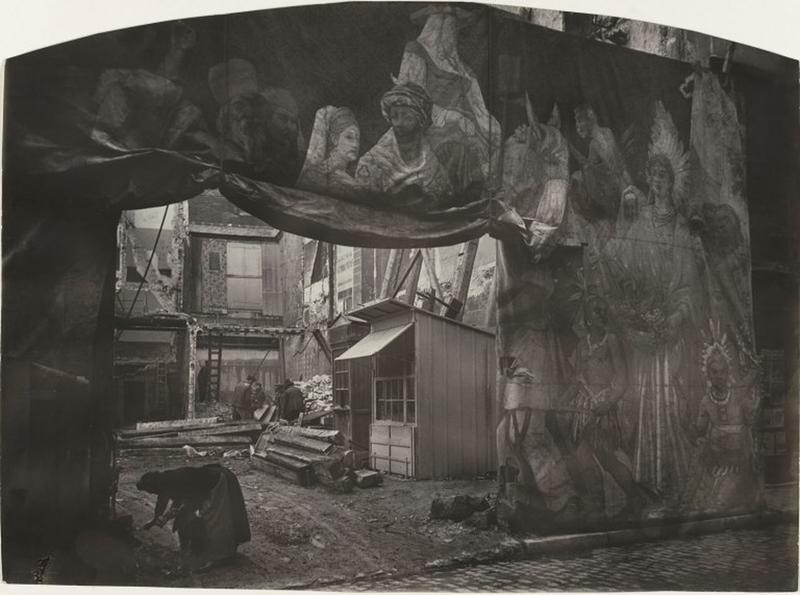
This photo from 1890 shows the messy remnants of a carnival, perhaps in an area used as a street-side theatre. The awnings have a somewhat ghostly quality, with artwork belonging to an era even earlier than this. It is another photo by Félix Thiollier, taken and developed in his home town of Saint-Etienne. Far from the dystopian and run-down scene in this picture, Saint-Etienne today has transformed into the ‘design capital’ of France, shedding its past as a coal-mining town to become a stylish modern metropolis.
Black dog in the snow, 1987
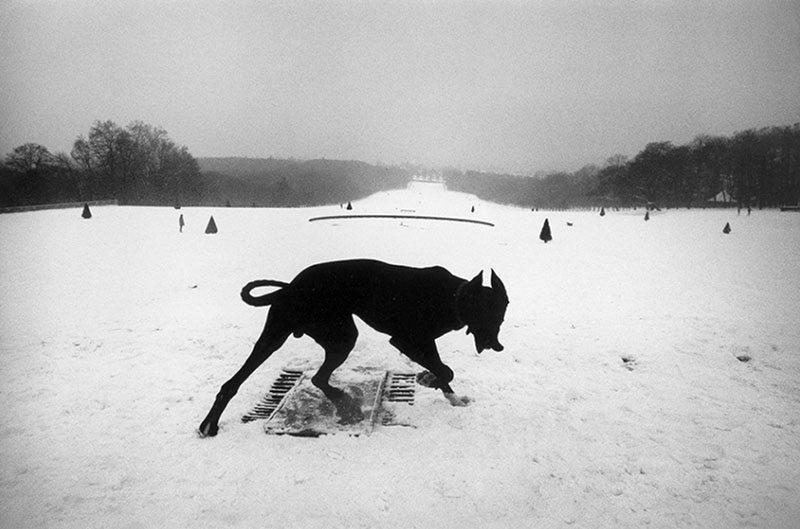
A particularly chilling shot, this photo shows a large black dog crouching in an icy landscape. Josef Koudelka took this photo after he began working for Magnum Photography – a role that he only agreed to after confirming he would always have freedom to choose his own photographic subjects. “Many of my photographs, I take without looking at the lens,” Koudelka later commented on his unique photographic practices. “It is as if the camera did not exist, an extremely mechanical act.”
Mine Landscape, 19th century
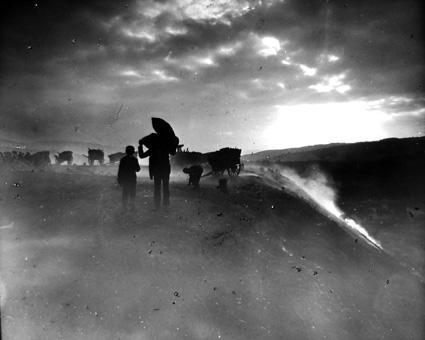
Little is known about this strange foggy shot from 19th century France, taken by Félix Thiollier. It shows the dangerous manual labour of mine workers near Saint-Etienne, then a major centre for the coal industry. Before he became an industrialist and photographer, Thiollier ran a ribbon-making company, like his father Claude Auguste before him. His other interests included art and archaeology. He befriended and was influenced by artists including François-Auguste Ravier, Paul Borel, Jean-Paul Laurens and François Guiguet.
Emma Thiollier painting on top of one of the towers of Notre-Dame, 1907
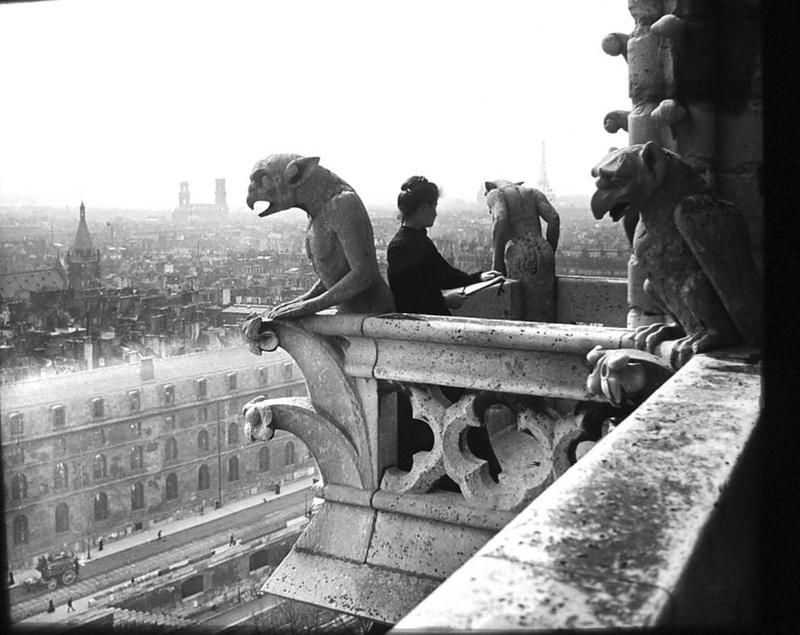
In another shot from the balconies of Notre-Dame Cathedral, Félix Thiollier captured a moment when his daughter Emma was painting the city below. Emma Thiollier, born in 1875, was one of her father’s favourite photographic subjects. She had three brothers: Noël, Philippe and Maurice. Educated in Paris, Emma later became a talented sculptor and painter, and she was heavily influenced by the artistic circles her father moved in. She also attended wounded soldiers during the First World War and lived to the age of 97.
Covered car – Long Beach, California, 1955
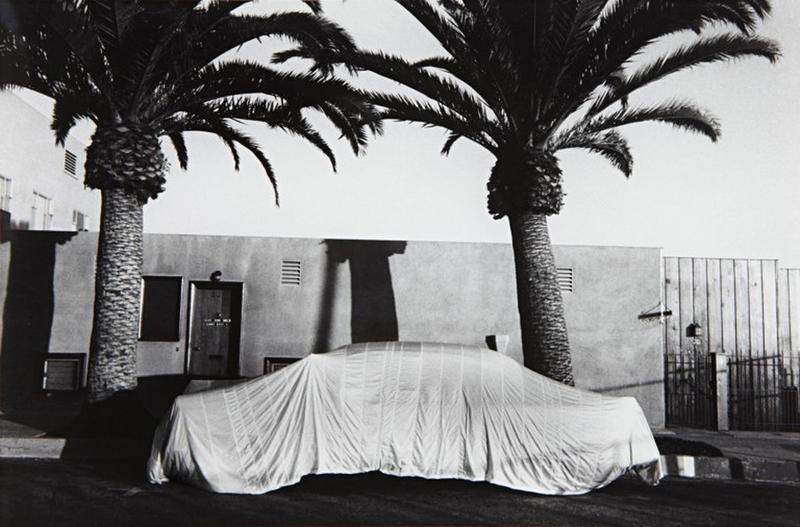
This photo by Robert Frank shows a car between palm trees, obscured by a large white sheet. The poet Jack Kerouac was particularly moved by this image, writing: “Car shrouded in fancy expensive designed tarpaulin to keep soots of no-soot Malibu from falling on new simonize job as the owner who is two-dollar-an-hour carpenter snoozes in a house with wife, and TV, all under palm trees for nothing, in the cemeterial California night.” This twist on a classic piece of Americana has won plenty of fans in the USA. Its exhibition history includes the National Gallery of Art in Washington DC, the San Francisco Museum of Modern Art, and New York’s Metropolitan Museum of Art.
Exiles by Josef Koudelka, taken August, 1968
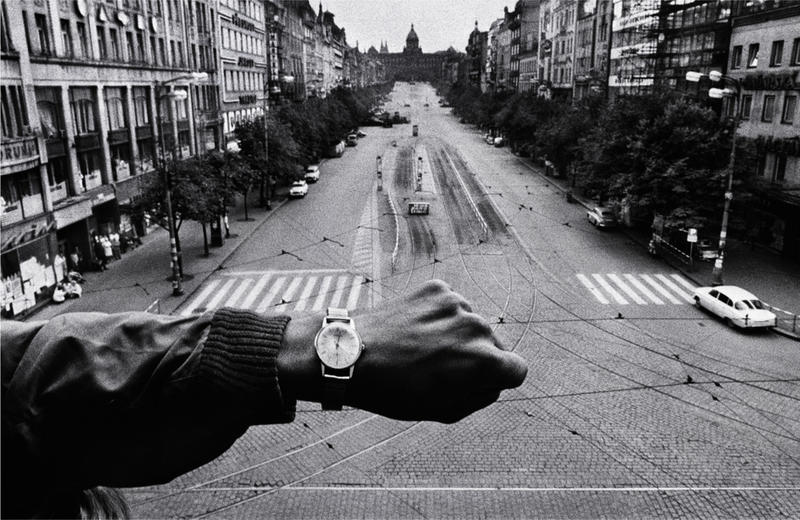
This photo, taken during the Soviet invasion of Prague, was published around the world. It also turned its creator, Josef Koudelka, into a political refugee. “To be in exile is simply to have left one’s country and to be unable to return,” Koudelka would later summarize. “Every exile is a different, personal experience,” he said. “Myself, I wanted to see the world and photograph it. That’s forty-five years I’ve been traveling. I’ve never stayed anywhere more than three months. When I found no more to photograph, it was time to go.”
Siphnos, 1961
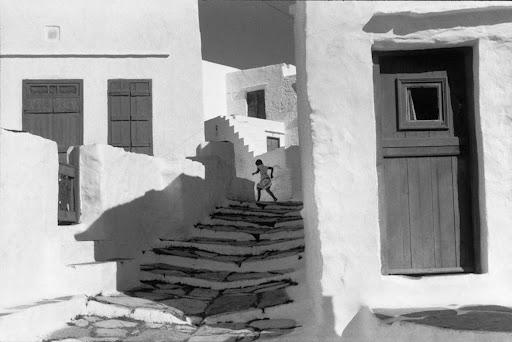
Playing with shadows, this photograph shows a young girl darting between buildings on the island of Siphnos in Greece. It’s an idyllic location, and between the spotless streets and whitewashed walls, the girl seems a little mischievous and out-of-place. The shot was taken by Henri Cartier-Bresson, a French Humanist photographer born in 1908. He travelled around Italy, Spain, Mexico and Morocco in search of intriguing and timeless subjects. But his most famous work is his documentation of Mahatma Gandhi’s funeral in 1948.
The lovers of the Bastille column, 1957
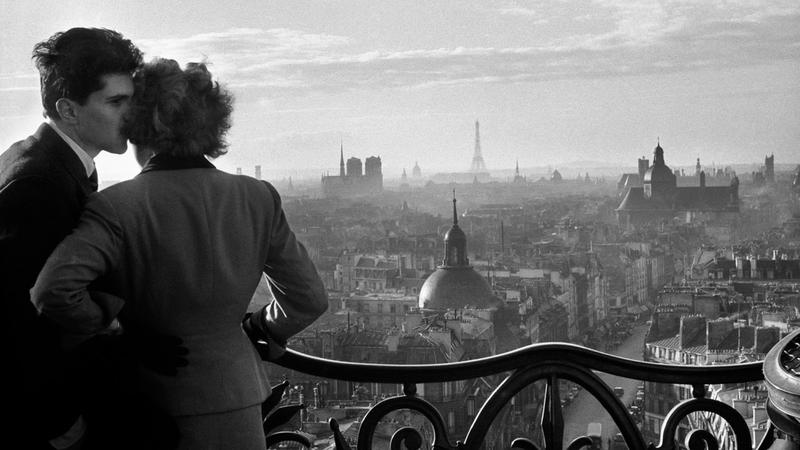
Photographer Willy Ronis spotted this romantic moment at the July Column of Paris. “Photographing couples on the banks of the Seine in spring – what a cliché!” Ronis jotted in his journal at that time. “But why deprive yourself of pleasure?” he added. “Every time I encounter lovers, my camera smiles; let it do its job.” His affection shines through in this intimate shot.
Kids in a Box on the Street, New York City, 1942
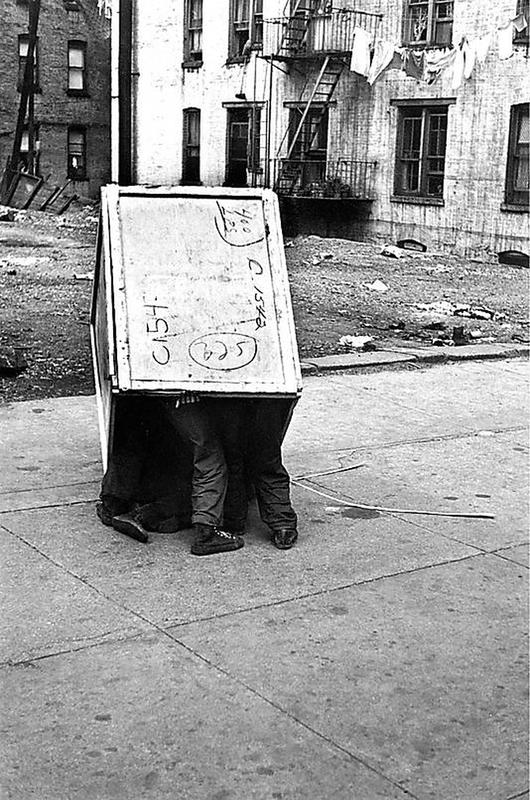
The photographer Helen Levitt often depicted children playing in the streets, with the dangers of their antics side-by-side with a sense of joy. This shot shows two kids engrossed in a game, possibly hide-and-seek or an imaginary world. Born in Bensonhurst, Brooklyn in 1913, Levitt dropped out of high school and took up photography at the age of 18. She found one early job in the darkroom of J Florian Mitchell, a prominent portrait photographer. After she became a prolific street photographer, David Levi Strauss described Levitt as “the most celebrated and least known photographer of her time.”
Kids on the Street Playing Hide and Seek, New York City, 1942
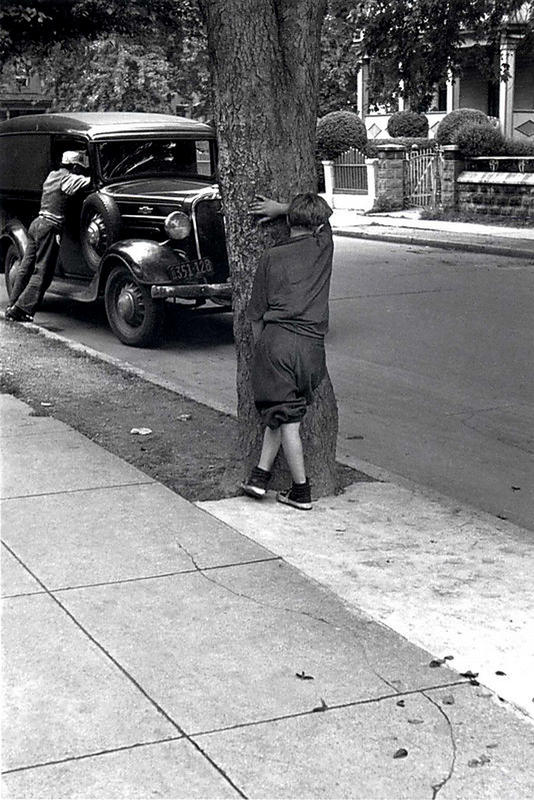
In another whimsical street shot, Helen Levitt found this boy counting for a game of hide-and-seek back in 1942. The well-to-do backdrop of mansions and motor cars provides a contrast with this moment of free entertainment. “I never had a ‘project’,” Levitt later said of her photography. “I would go out and shoot, follow my eyes – what they noticed, I tried to capture with my camera, for others to see.”
A gargoyle looking over Paris
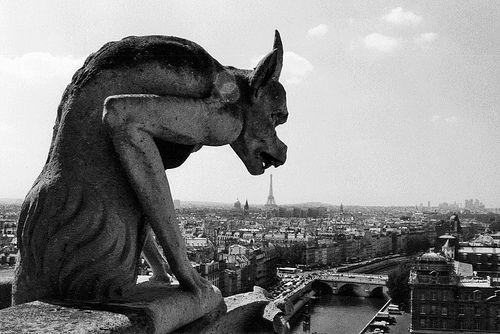
The gargoyles of Notre Dame have provided artistic inspiration to countless famous figures over the decade. This photographer chose to angle his shot as if one gargoyle is sniffing the distant Eiffel Tower. In The Hunchback of Notre Dame, Victor Hugo describes the gargoyles’ strange appearance when night falls: “Then, said the women of the neighborhood, the whole church took on something fantastic, supernatural, horrible; eyes and mouths were opened, here and there; one heard the dogs, the monsters, and the gargoyles of stone, which keep watch night and day, with outstretched neck and open jaws, around the monstrous cathedral, barking.”
Mining Landscape, Saint-Etienne circa 1895-1910
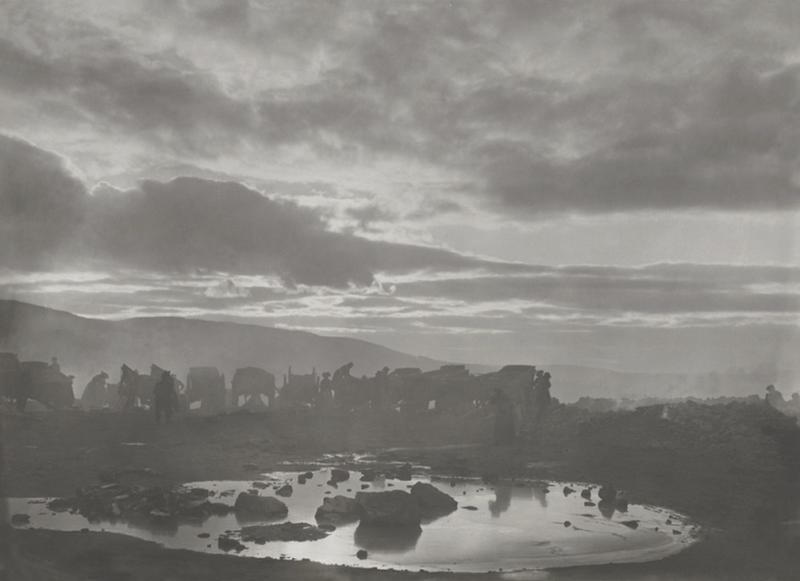
This gleaming lakeside shot is of course in black and white, lending to the water an almost oil-like appearance. With a backdrop of mining equipment, this photograph showcases Thiollier’s fascination with the industrial world and its contrast with the natural landscape.Thiollier was a photographer with a great love for the natural environment and France’s wild regions – but he was also a former industrialist, mass-producing ribbons to meet high demand in the Victorian era. This kind of photo shows his mixed feelings towards the new mechanical age.
Idylle Forézienne
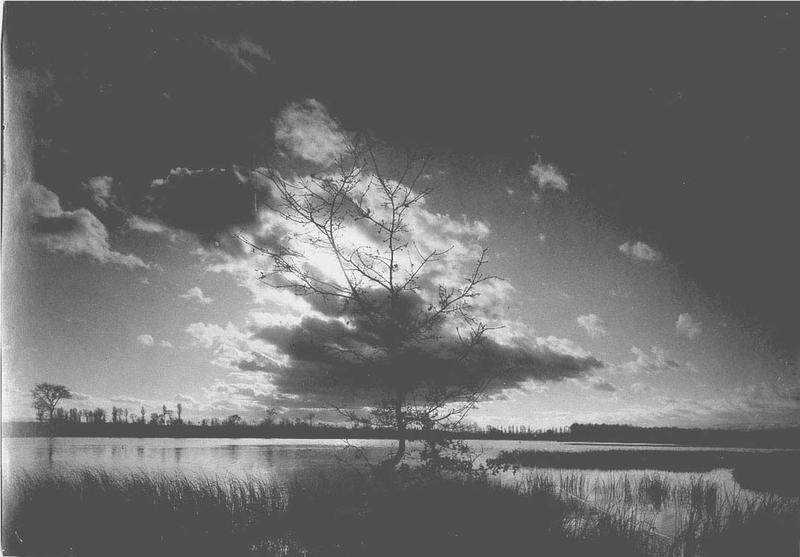
Is it a tree or is it a cloud? Thiollier’s landscape photography is taken here on Earth, but it often feels as if his camera is capturing images from another plane of existence. This goosebump-inducing photo captures things that we see every day – trees and clouds – and makes them look incredibly special. It’s an understatement to say that mother nature is photogenic. Take a step into any national park and you’ll be astounded by the grandeur of everything around you, but it’s impossible to capture it on a phone or even a point-and-shoot camera. Thiollier’s haunting images don’t just come from his camera, they come from his eye, his hand, and his technology.
A quiet moment during the Prague Invasion, the 1960s
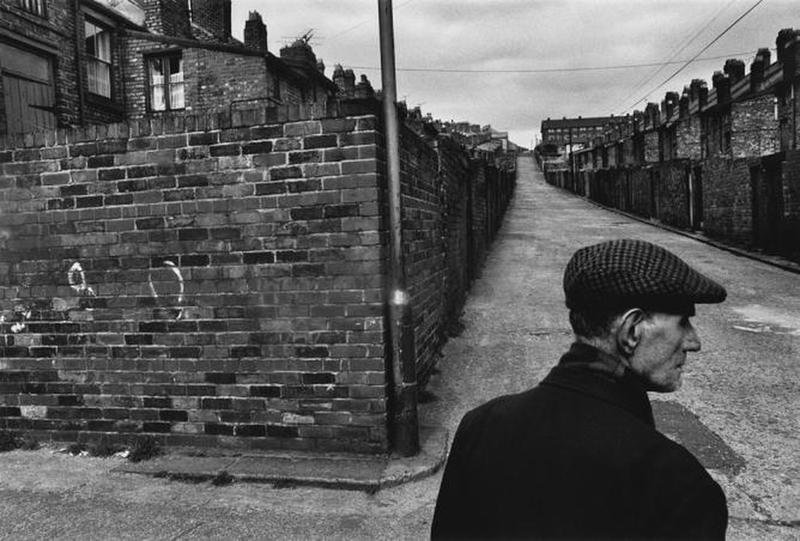
Here is an example of Josef Koudelka’s documentation of the Soviet invasion of Prague, which won him renown worldwide but put him under huge threat from the invading forces. “The Russian invasion of Czechoslovakia in August 1968 concerned my life directly,” he later commented. “It was my country,” he summarized. “I took these photographs for myself, not for a magazine. It was only by chance that they were published. I wasn’t a reporter… I knew it was important to photograph, so I photographed. I didn’t think much about what I was doing.”
Prague Spring begins in Czechoslovakia
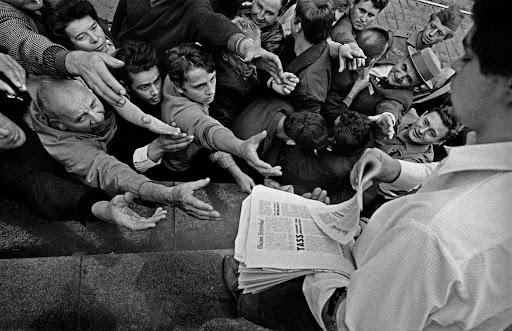
When Alexander Dubcek became the de facto leader of Czechoslovakia in 1968, he appeared to herald a new era of freedom and liberty, and he challenged many of the dominant Soviet principles. This period was celebrated as the ‘Prague Spring’, a jubilant time for many artists, journalists and filmmakers. But Dubcek soon found himself accused of ‘westernising’ the nation, and only months later, the Soviet Union invaded Prague and he was forced to resign. This shot by Josef Koudelka is one of his many pictures depicting the highs and lows of this volatile period.
The Verpilleux coking plant, near Saint-Etienne
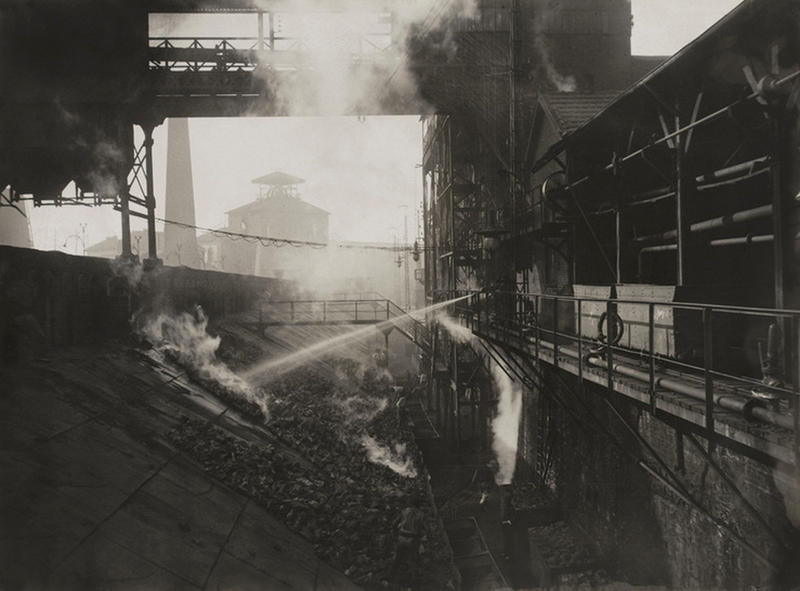
Thiollier was fascinated by his local coal mining industry, as we can see in this photo of a coking plant. This site burned coal in the absence of oxygen at 600 degrees celcius, removing iron waste from the substance. But Thiollier also researched the early history of coal in the area, writing: “In Saint-Etienne [Francis I] had sent, as early as 1516, a Languedocian engineer, Georges Virgile, to inquire weapons that could be drawn from the forges of the country. We only made crossbows, halberds or spears. However the abundance of coal and mineral and the goodness of the waters Furan for tempering iron made this place suitable for the manufacture of firearms.”
Two men tip a coal bin, 19th century
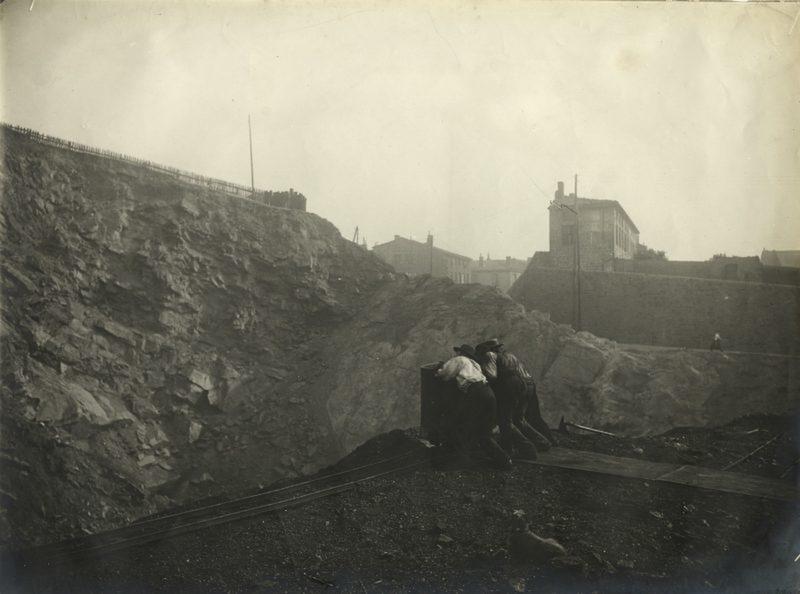
Coal mining was a dirty and dangerous business, with its early proponents offering little welfare or physical protection to their employees. Children and women laboured in these death traps, and workers suffered all manner of injuries and sickness from inhaling coal dust. The so-called ‘black lung’ was a dreaded disease that affected those who spent long hours in the mines. Technically known as ‘coal workers’ pneumoconiosis’, this respiratory condition – which Thiollier’s photo above may conjure in your imagination – is still rampant today. Tens of thousands of coal workers still die from CWP every year worldwide.
The undergrowth in Forez, the 1870s
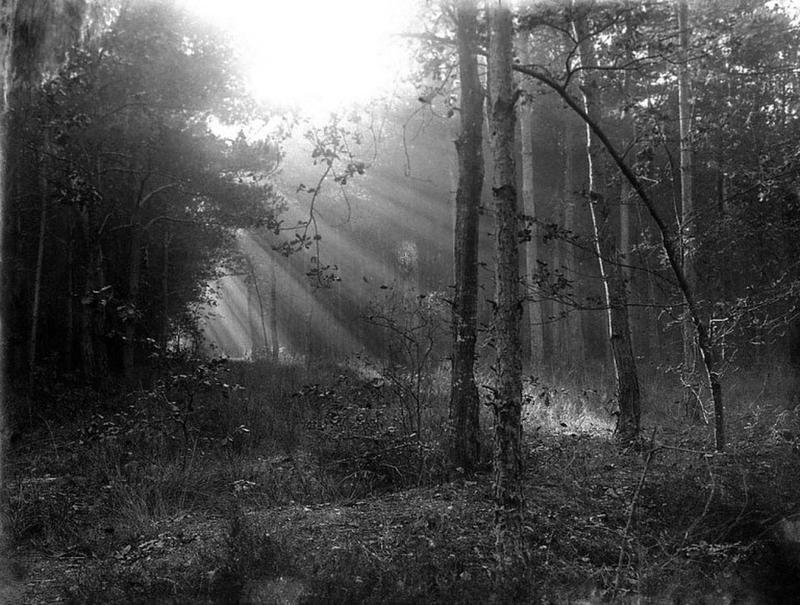
This photograph shows dappled light falling on the forest floor. Although the leafy trees show it isn’t winter, this picture’s overall mood is strangely icy – it feels like a frozen world, without an animal or any movement in sight. “Near the ancient city of Lyon, on the side of the setting sun, there is a country called Forez which, in its smallness, contains what is rarest in the rest of the Gauls;” the author Honoré d’Urfé later wrote. “Because being divided in plains and in mountains, both are so fertile and situated in the air so temperate, that the earth is capable of everything that the plowman could desire.”
Willow trees near the duck pond at Verrières, 19th century
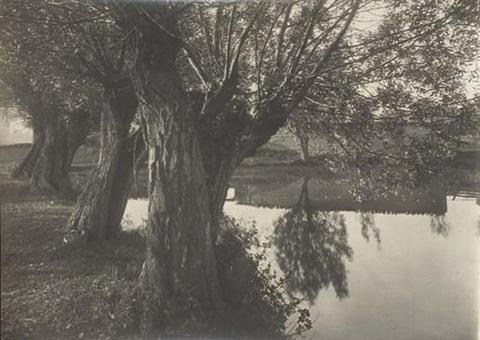
This photograph, preserved as a gelatin silver print, is a work by Félix Thiollier. It shows twisted willow trees over a large body of water, though the photo’s title specifies that it is a duck pond. This bucolic scene is dated only to the 19th century. The shot comes from the village of Verrières in Forez, around 50 kilometres from Thiollier’s home in Saint-Etienne. Many of Thiollier’s landscapes have now changed beyond recognition – but Verrières-en-Forez is still a small settlement, surrounded by lush countryside and hiking routes.
En Valley
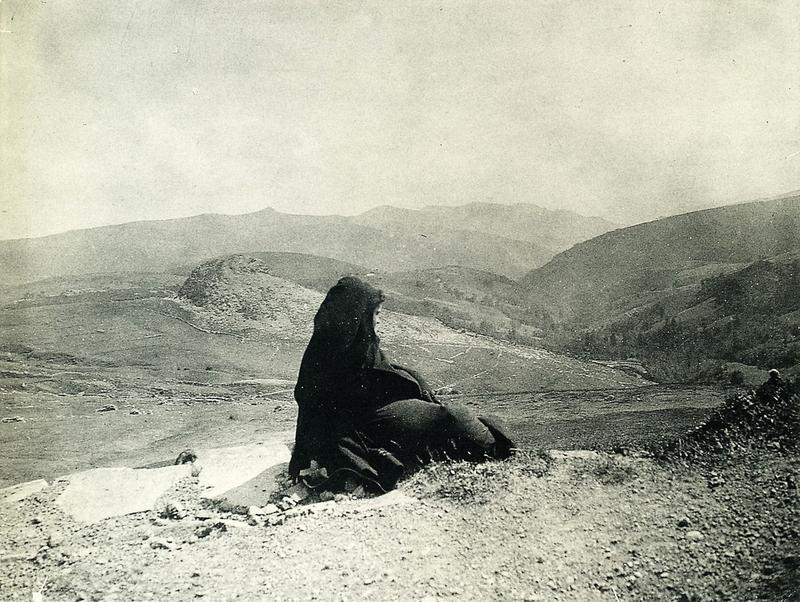
In another shot by Thiollier, an uncanny sensation arises from staring at this lonely figure. Whether Thiollier intended it or not, for generations this image has been associated with grief and mourning due to the woman’s black garb. As far back as the Roman Empire, when mourning families would dress in dark ‘pulla’ togas, dark or black clothing has been worn as a sign of respect to the recently deceased. For the women of history in particular, black clothing was often adopted for many weeks or months after the loss of a husband.